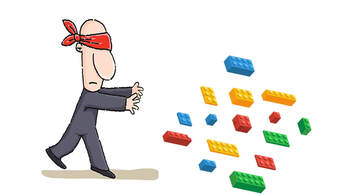 Measurement is the poor relation of marketing. While Indie authors may come to realise that they have to market their books, they don’t always realise the essential role that measurement plays in their decision making. Not knowing how to use measurement in marketing is like walking blindfolded through a room barefoot, with the floor covered with Lego bricks. At some point you are going to say “Ouch, that hurt.” Now, you may think that there is only one measurement that is worth looking at, and that is sales. But you would be wrong. To tell you why, I’d like to present you with a hypothetical scenario.  Let’s say that an Indie author has spent £100 on advertising in a month. They split that 50:50 between Amazon Ads and Google Ads. They have made sales and made a profit on their advertising, so they want to re-invest some of that profit into more advertising.
With that 3rd bullet goes supplementary questions – should they keep the split 50:50 or should they spend more on one platform than the other? The only way to make a sensible decision is to analyse the data and see what it is telling them. What the author needs to know is how many clicks each ad got, how much each click cost them and how many clicks were converted to sales.  To give you a real life example, we recently ran a Google Ad for one of our titles. According to the data we got a lot of clicks on the ad, so you might think that it was a success. However, there was no change in sales volume for the book. If the clicks had been converted into sales, there should have been a corresponding rise in sales volume. Only by putting the two sets of data side-by-side could we see that. The next month we ran an Amazon Ad for the same book. We didn’t get nearly as many clicks as we got for the Google Ad, but we did get a rise in sales. Not only did Amazon Ads tell us how many clicks got converted to sales, we could see it in our KDP sales data as well, in terms of increased sales volumes compared to the previous month. So, going back to our hypothetical example and the 4 questions (plus supplementals) we asked, we might well decide to spend all our budget on Amazon Ads and none on Google Ads. The data was telling us that, so we have no reason to doubt our decision making. 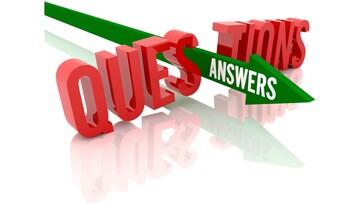 But the story doesn’t end there. If we were getting so many clicks from Google Ads, why weren’t they getting any conversions into sales? Normally we would say that it has something to do with the book’s blurb, the reviews or the free sample. Maybe they weren’t enticing enough. But if that were the case it would apply to the Amazon Ads as well, which we know wasn’t the case. So, we have to look for different answers. When we drilled down into the data, we discovered that the majority of the clicks we were getting were from outside of the UK. The book is on sale everywhere, so that shouldn’t make a difference, but perhaps it was. The book is very UK centric in its story. Perhaps that put other nationalities off buying it. We can’t be certain of that, but it is borne out by our KDP sales data. 98% of our sales for that title are made in the UK and Ireland. Again, we were putting data side by side in order to interpret it. 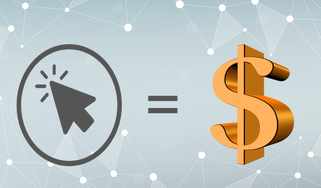 Above, we mentioned the need to understand how much each click cost us. That is essential information, because if we don’t know that we can’t know if our ad generated a profit. Let’s say we got 100 clicks and made 10 sales (that’s a fairly typical conversion rate for a new author). That sounds good, doesn’t it? According to Amazon Ads those sales would be worth £59.90 gross if the book sells at £5.99. Cause for celebration, perhaps? Actually no. Those 10 sales may have been valued at £59.90 gross, but may only have yielded £30 in royalties. If those 100 clicks cost us £35 (again, a typical cost based on 35p per click) then our ad campaign didn’t make a profit, even though it made sales. It made a loss of £5. And don’t forget that £35 is the pre-tax cost. If you are in the UK you have to add 20% VAT to get the final cost. Maybe we would need to re-think whether or not to spend our advertising budget with Amazon Ads too! Again, we have to put data side by side to interpret it and the data may have to come from different sources, eg both Amazon Ads and KDP.  Now, I’m not saying advertising doesn’t work, because it does. What I am saying is that we have to use all the available data to measure the effectiveness of our advertising. If you are spending £100 (after tax) on advertising and you are making £101 in royalties, then whoopee. You are in profit. But you have to know that and that means measuring what you are doing. So far we have only talked about paid advertising. What about social media?  Indie authors spend a lot of their time on social media promoting their books. It isn’t costing them anything except time, so no need to worry, is there? Actually, as the old saying goes, time is money (Benjamin Franklin). All the time you are on social media promoting your books, you aren’t writing new books which could make you more money. So, time has an associated cost. It is therefore necessary to work out if the time you spend promoting your books through social media is actually time well spent. Social media sites provide data on how many people have interacted with a post. That could mean a “like” or a reply, or it could be a click on a link. The more interactions there are, the more likely it is that they will convert into sales.  So, if your posts aren’t getting interactions, you need to know why, because to continue what you are doing is just going to waste your time. If you always do what you always did, you’ll always get what you always got. This may mean asking other people what they think of your posts, so you can work out what is most likely to get an interaction. Also, you need to “benchmark” against posts that get a lot of interactions to see what it is about them that makes them so attractive. 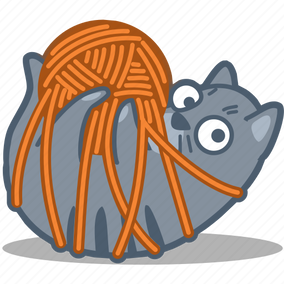 Of course, we mean posts that promote books. Knowing that posting a video of a cute kitten playing with a ball is going to get lots of interactions, isn’t going to help you to sell any books. Lots of authors think that asking questions on social media and getting a gazillion answers is interacting. It isn't. yes, the post gets a lot of responses - but is it selling books? If it isn't selling books it is just wasting time. So, some of the data that has to be compared are interactions compared to books sales. Do they line up. If not, why not? But knowing that a video gets more interactions than a still image might also be useful to know. 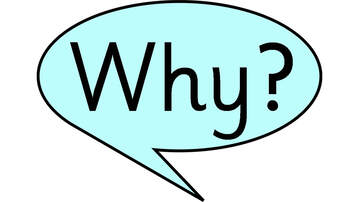 But with measurement you must always ask the question “why”. - Why aren’t my posts getting interactions?. - Why aren’t interactions on social media converting to sales? - Why aren't my video clips getting more interactions? Etc. I can’t answer those questions for you in a blog. I can’t even think up all the questions you might want to ask. But there will be answers. You just have to go looking for them. Social media sites provide all that data for free. All you have to do is use it. Measurement and data analysis isn’t very exciting stuff. But using it wisely can make your book sales very exciting. But, like all of book marketing, you have to invest time into it to get the best out of it. But it could help you avoid those Lego bricks. If you have enjoyed this blog, or found it informative, then make sure you don’t miss future editions. Just click on the button below to sign up for our newsletter. We’ll even send you a free ebook for doing so.
0 Comments
Disclaimer: No financial inducement was offered or requested for this review and no payment was received. The reviewer was provided with a free review copy of the book. The views expressed in this review are those of the reviewer and are not necessarily those of Selfishgenie Publishing. 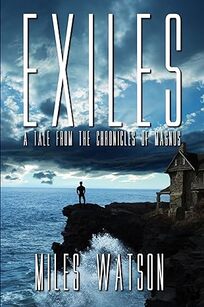 Exiles, by Miles Watson, is a novella, but it could almost stand as a full length novel. The book serves as an introduction to “The Magnus Chronicles”, a series of dystopian novels set in a world that could be Earth in either the past or future. That is not clear from the story. Is it an alternative history or a possible future? I think the reader must decide. There is some modern technology, but it is limited by “The Order”, the body that rules over most of Europe. However, there is also a lot of 19th century technology still in use, though that might be because so much modern technology is banned. This little book actually tells two stories in one. The first is told by Marguerite Bain, the Captain of a smuggling ship. Smuggling is an organised, if dangerous, profession with its own ruling Guild. Marguerite gained her command under the tutelage of a senior Captain who now serves as one of the Guild’s governors. While smuggling is illegal, a blind eye is turned for the most part. Bribery and corruption play a large part in that unofficial tolerance, as it does in most of life under The Order. Marguerite has had a hard life, not one to be envied by any woman. Now, as skipper of her own ship, she has to show that she is ready to kill anyone who challenges her position and the only way she has been able to prove that is to do it. Now an uneasy truce lies between her and her crew, though she knows that if she shows any sign of weakness they would kill her, after taking their pleasure first, of course. The Sea Dragon, her ship, is contracted to deliver supplies to the eponymous exile on his remote and barren island. It is a task she is unable to refuse because it has been brokered by the Guild and such a contract can’t be broken. Her orders are strict. Deliver the supplies and leave the island. Do not make any attempt to communicate with the exile. The previous contractor forgot those rules and now he is no longer alive. But Marguerite is curious and can’t resist finding out about the exile, so she secretes a notebook and pencil in the supplies, asking him to tell his story. Which is the second story in the book. Enitan Champoleon is a name that is notorious as an opponent of The Order, an organiser of the resistance. He is almost mythical, a sort of Scarlet Pimpernel figure. But if the Order captured him they would just kill him, not exile him on a barren rock. So, who has placed Champoleon in this living hell? All becomes clear by the end of the story. But through this dialogue Marguerite starts to feel a bizarre kinship with the exile. The story's point of view switches back and forth between Marguerite and Enitan but at all times it is clear who is narrating. The style of language is fitting for the ambivalent chronological setting of the book. In many ways it is Victorian, but interspersed with more modern phrases and idiom. Either of the two stories are capable of engaging the reader fully, but the two of them together become compelling and the book is a real page turner. For lovers of fantasy or sci-fi it is a very good read. This reviewer is now a convert and will soon be embarking on reading The Magnus Chronicles in full. The ebook can be purchased from Amazon for £3.95 or can be downloaded on KindleUnlimited for free. The paperback version is £4.74 (all prices correct at time of posting). I recommend “Exiles” by Miles Watson and to find out more, click here If you have enjoyed this blog, or found it informative, then make sure you don’t miss future editions. Just click on the button below to sign up for our newsletter. We’ll even send you a free ebook for doing so. 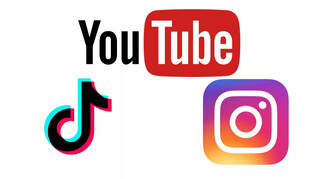 Up until now we haven’t posted much about using YouTube, Instagram and TikTok for book marketing. It isn’t because they aren’t any good for marketing. In fact, just the opposite. Those platforms are as good, if not better, than Facebook or X for selling your books. No, the reason we haven’t posted about them before is that you have to think about how you use them in a different way from other social media. Because of that we’ve been trying out different approaches of our own to see what works – and what doesn’t. Just posting an image of your book cover isn’t going to sell your book on those 3 channels. Not even making a book trailer featuring your book is going to work.  The reason why is that those 3 marketing channels work on the basis of personal interaction. What do we mean by that? After all, it is someone talking on a video. How can anyone interact with that? Well, they interact on a psychological level. The viewer sees the person in the video talking directly to them and to no one else. The video speaks to them personally. Now, there are a number of techniques that the people in the videos use and they vary according to what is being sold. I’ll illustrate what I mean with some examples. 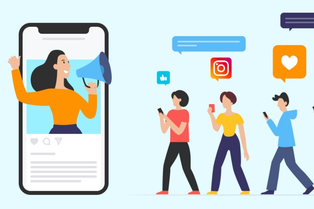 Let’s start with the “influencers”. These people make a lot of money because they sell products on behalf of brands. But they never use the word “sell”, or “buy” or make any other reference to commercial transactions. I’ll use a stereotypical influencer to illustrate: the make-up demonstrator. They open with a line such as “I want to show you this great new lipstick (or whatever) I’ve just discovered.” Of course, their tone of voice is excited. This lipstick is so great they can’t contain their excitement about it. Which gets the viewer excited because excitement is contagious. Straight away the viewer is interested because the influencer is letting them in on their new discovery, not trying to sell them the lipstick (even though they are). They are sharing a secret with them. Those are very intimate acts, and we respond to them at an emotional level. They then demonstrate their use of the lipstick, which makes them look fabulous of course, and the viewers want to look just like the influencer, so they buy the product. The influencer may not even mention where the viewer can buy the product. They’ll show them the brand name, of course, but then they’ll leave it up to the viewer to follow-up because that way they won’t feel pressured into buying. The technique isn’t new. Product demonstrators have been around almost as long as products, but in the past they were standing in front of you rather than appearing in videos on-line. 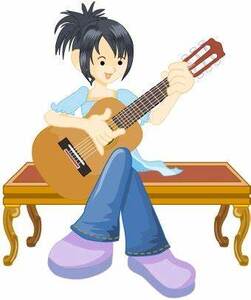 Next we have the musicians. Their technique is different. They’ll start by saying something like “This is my latest song which I want to share with you.” Again, you are being drawn into an inner circle of intimacy. They then sing a verse and a chorus. If you like the song, you then have to either buy it to hear the rest or add it to a playlist. Either way, the musician sells their music without actually selling it. 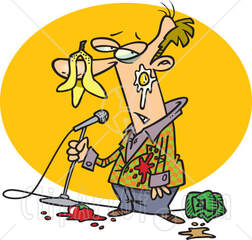 Then we have the comedians. They post video clips of their act. They make you laugh, so when they announce their next gig or their next tour, you want to go along and see them, so you buy tickets. That is more of a delayed reaction, but it means more ticket sales than if they hadn’t posted the clip. So, three different techniques for three different types of product. There are other types, but those serve my purpose in illustrating how the channels are used in different ways. 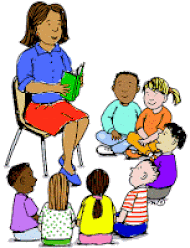 Now, how do you adapt this to suit your product – a book? With YouTube you can adopt the same technique as a musician and read an extract from your book. You don’t have to show your face if you don’t want to but setting the scene is important; use the camera to act as the viewers' eyes, perhaps finding the book on the arm of a comfy chair and settling down to read it. The voiceover then reads the extract, which you can do yourself It will probably take you a few goes to get the sort of image you want, but it will work. Put an “end board” on the video saying where it can be bought and provide a link in the video’s description along with the blurb and some suitable hashtags. If you use Canva or BookBrush (or similar packages) you can make videos of someone reading an extract. For example, if your book is set at sea you can uses a video of a seascape with you reading the extract as the soundtrack. Then promote the heck out of the video on your other social media.  Instagram and TikTok aren’t so well suited for readings. Their users have short attention spans. Anything longer than a minute probably isn’t going to be watched to the end. And anything that isn’t eye catching isn’t going to be watched at all. The first 5 seconds of the video is crucial to grabbing the viewer’s attention. This is where you have to project your personality as an author. If you try to pitch your book, you won’t sell anything. You have to pitch the idea of books in general and then mention your own books in passing. A popular style in recent months has been “Five books I wish I could discover all over again”. You don’t have to show your face, you just have to show the book covers and maybe your hands flicking through the pages. And, of course, you have to talk about why the books mean so much to you. Then you segue into how those books inspired you to write your own book, a copy of which you also happen to have in camera shot. You can talk about your own books, but you have to put a new twist on it.  People love stories. People love stories. People, especially those that read books, love stories, so use that to your advantage. One of our authors laid out his books on a table then said that not only did the books tell a story, they each had a story of their own, which was how they came to be written. He then made a separate video for each one and told the story of how he had been inspired to write it, into which he wound some of the book’s plot and characters. And it worked. Each video sold copies of the book he was talking about. But he never actually talked about the book in the way he would have in a written blurb. I would recommend going onto TikTok and Instagram and using the hashtags #Booktok and #bookstagram to see what other authors are doing on there. If your favourite authors have TikTok or Instagram accounts, see what sorts of content they post to promote their work. Remember, imitation is the sincerest form of flattery. Identify the sorts of videos that make you feel good about the author and their products, not the ones that are trying to pitch books directly to you. Emulate the former, not the latter.  Unlike X or Facebook, these channels aren’t about how many followers you have. Your videos will be shown to users based on what they like to see, so it doesn’t matter if they follow you or not. If they are using any of the hashtags that relate to books or reading, there’s a good chance your video will be shown to them if you have used related hashtags, including genre hashtags Of course, if they follow you that’s a bonus, because it means they will definitely see your videos in the future. But that isn’t as important as it would be on X or Facebook. Once again we must add a “health warning” that using YouTube, Instagram and TikTok isn’t going to turn you into a best selling author overnight. But they can add additional strings to your marketing bow. Experiment and have fun. You have nothing to lose except for a bit of time.  Just a few tips for you. Make sure that any book titles haven’t become reversed during the recording process. I recently watched some TikTok videos by an author I follow and in a couple of them her book titles appeared as “mirror images”. This is a common problem when using the camera in “selfie” mode and holding the book up in front of your face (try it if you don’t believe me). If you have friends who read your books, ask them to do video reviews for you on TikTok or Instagram, making sure they use suitable hashtags, including your author name. Vary your styles and themes. If all the videos you post look the same or sound the same, people will lose interest. 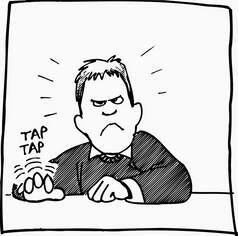 Be patient (yes, that old one again). If you are just starting out on these channels it will take time for people to find you and to share your videos. But they will if you give them long enough. Post as frequently as possible. Yes, it’s a big time commitment to keep on making new videos, but anything worth doing is worth investing the time into doing it. Use "dead time" to make videos, eg when commuting, coffee breaks, lunchtime etc. For those of you who have never used these platforms, here are some links to helpful videos on how to use TikTok. Most of what they say can be applied to YouTube and Instagram too. TikTok Beginner’s Guide https://www.youtube.com/watch?v=rjjjlJw2cgM How to make TikTok Videos https://www.youtube.com/watch?v=vAho-cr5UxY 10 Mistake TikTok users make https://www.youtube.com/watch?v=nrY9HpJd6zE Hashtags https://www.youtube.com/watch?v=xcZHGr_xpII If you have enjoyed this blog, or found it informative, then make sure you don’t miss future editions. Just click on the button below to sign up for our newsletter. We’ll even send you a free ebook for doing so. Selfishgenie Publishing are pleased to hand over our blog this week to one of our poets, AngieD, who is writing about how she became a poet and how she is inspired to write her poetry. Disclaimer: All views expressed in this blog are those of the author and aren't necessarily those of Selfishgenie Publishing  Poet AngieD Poet AngieD I’d like to say that writing poetry was something I was good at in school, though in between Romeo and Juliet, Hard Times et al, there didn’t appear to be much time devoted to this category of English Literature; what little poetry we children were exposed to I could barely understand since, to my mind, it was in adult language and highly cryptic; too cryptic for my little ears. I therefore had very little knowledge of what poetry was about, except for limericks and nursery rhymes. And so, if I said it was something I’ve always wanted to do and that each time I read a ditty it had me thinking “Gosh! I wish I could write a verse” and piqued any great interest, I would be lying! It wasn’t something that ignited any spark of excitement or great interest at all, quite different from hearing someone with extraordinary musical abilities, which aroused feelings more of jealousy that I couldn’t, and probably would never, play like that.  I didn't get excited about poetry. I didn't get excited about poetry. So, besides reading limericks and silly nursery rhymes, I didn’t really give poetry much thought. In fact, the first I really knew about any ability to write a verse was quite a few years ago, lying in bed one weekend morning in my very small and humble-in-great-need-of-decoration second floor London flat and being disturbed by the neighbours occupying the one below. They were making an awful racket but, instead of getting highly irritated (well, not strictly true – I was a little irritated at first!) my mind just seemed to speak in rhyme. It was quite a startling and frightening revelation to me. 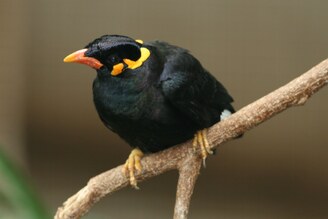 Gracula religiosa intermedia (Common Hill Myna) Gracula religiosa intermedia (Common Hill Myna) At first I heard myself say “who’s that talking?” not realising it was my mind. Nevertheless, I went with the flow, chuckling as I wrote down the words of this verse about a Myna bird. I had never had an encounter with one; I’d never even seen one. I even had to look it up. What connection had this with the noise I was hearing? I have no clue, but my first ever verse was written and, being a PA Secretary (and previously in the “be prepared” Girl Guides and Girls’ Brigade), I always had pen and paper by my bedside. And that was the start!  From then on it was, as they say, all systems go, like a dam had burst and that part of my mind which had laid dormant had suddenly woken up, its contents released, and there was now no turning back. Things I’d never noticed before would quickly come into my mind’s eye and words or lines would pop up. Voices would say “hurry up there’s another waiting to be written down”. It could be frantic at times since I couldn’t write quickly enough to get everything down! Now, was this the reason I learned shorthand?* Even if it wasn’t, it was now coming to the fore, since it enabled me to write at breakneck speed. This doesn’t bode well for wrists and hands since even before I arrived to start a day’s work, I was already weary from an hour or more of writing while on my train journey.  The lightbulb of inspiration. The lightbulb of inspiration. I found nothing in particular inspired me. In fact, everything inspired me. Finding a window seat on the train was my most important early morning mission so I could write while observing the scenery and how it changed from morning to morning. It was beautiful. How had I never noticed this before? So much to see and appreciate; now that was exciting! Scenery, people and animals were looked at in a different light. Do you ever notice the habits of people: feet on seats where others have to sit. Leaving their rubbish on seats and floor. Grownups picking their noses, biting their nails, coughing or sneezing without covering their mouths, speaking so loudly one can hear every word (and me itching to join in!). That annoying clicking on laptops or ‘phones as they type away as if the train is their office! My mind would just rhyme away; I could have sat on the train all day just writing.  Inspiration can come from anywhere. Inspiration can come from anywhere. I’m finding writing poetry is a 24/7 thing. Everything I look at, see, or hear becomes a subject. Although I have written now for quite a few years, I have only recently succumbed and accepted the fact that writing is a part of me. It happens anywhere at any time, in any place (church, supermarkets, the aforementioned trains), I’m not really conscious of it happening, it just happens; commuting on my way to work when I had to commute; walking from the railway station to the office; in a restaurant (and often I would be asked if I was a reporter!). Whatever popped up in my mind would have to be written down. I find writing takes no prisoners if it’s in your mind it has to exit somewhere and if one doesn’t comply pretty sharpish, it fades away and is forgotten. Work produced ample opportunities to write fun little personal verses. If a colleague was having a bad day, I could write something to make them smile. Business acquaintances too would engage and respond to my verse, in verse. Which made work all the more fun and, sometimes, they would even apologise for not replying in the same vein!  Everything seemed now to be about writing verses, not just writing a memo in prose, but some notification of meetings or cancellations were rhyme written and, again, replies would come back in verse! See, everyone can rhyme! Earlier years would see me go to bed with a pencil and notebook and practically never sleep! I am learning to control it a little more than in past years. I won’t say I’m completely successful, that would be impossible. If that which is filling my mind is not written down then it is lost forever. This has been tested; I’ve had a verse(s) in my mind and thought that chanting it over and over during the night would ensure it would be remembered in the morning. Not so, I couldn’t even remember the subject, so that much I’ve learned. Even though I now leave the pencil and paper on a cabinet three steps away from the bed, verses still often, come in the middle of night and I have to write them down but, thankfully, it’s much easier doing it via the recording app on my phone! 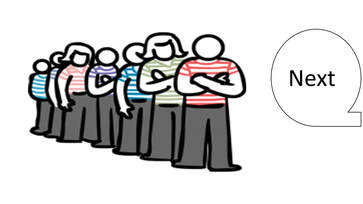 The queue of ideas is never ending The queue of ideas is never ending At times it feels like a tap that never switches off. Each new day brings a different set of subjects and so the writing continues, and you tend to become at one with whatever you’re writing about. It never occurred to me that I would be writing for so many years. Did I ever think I’d write so many? No. I thought one day I’d run out of things to write about, maybe about the 50th verse and that one day the verses will dry up. Touch wood, thousands of verses later it hasn’t happened yet. I am aware of the saying all good things come to an end, but my end has not yet come! Do I get tired of writing? Well actually, physically, yes I do. It’s a never-ending task to which most poets and authors of books can probably attest. There is always an idea in your head and before you can write it down another one is waiting in the wings eager to be noted. The unavoidable task of writing is logging all that is written!  The one about the loo rolls! The one about the loo rolls! I write to empty my mind of words to make room for the words I can see pushing past those I’m writing, so I think so there’s no time to enjoy. I do often sit while watching TV reading some of the verses and often wonder what the blazes was I thinking to write that (like the one about loo rolls!). But what I enjoy most and the best reason to write is seeing those who hear my readings, and knowing those who read my book smile and/or comment that they can relate to whatever they’ve heard, whether it’s romance or why toenails grow much faster than fingernails. I’ve said it before and I’ll say it again, if it makes people smile or gives food for thought then it’s been worth writing! 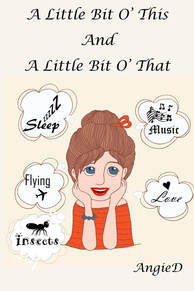 Poetry seems to be within me for the foreseeable future, so I have (happily) learned to live with it and the constant buying and sharpening of pencils!. Poetry is my world along with music, spinach, dancing and cheese. To find out more about AngieD’s poetry, see her collections on our “Books” page. Two more volumes are scheduled for publication during Spring 2024. * For younger readers, shorthand was a system of speed writing. The modern versions can be traced to 1720, but it is known to have existed as far back as the 4th century BC. It is a way of writing that allowed secretaries, journalists etc to record the spoken word at the same pace as it was uttered, without missing any of it. Modern technology has rendered it obsolete. To find out more about AngieD’s poetry collections, click here. If you have enjoyed this blog, or found it informative, then make sure you don’t miss future editions. Just click on the button below to sign up for our newsletter. We’ll even send you a free ebook for doing so.
|
AuthorThis blog is compiled and curated by the Selfishgenie publishing team. Archives
June 2025
|

 RSS Feed
RSS Feed